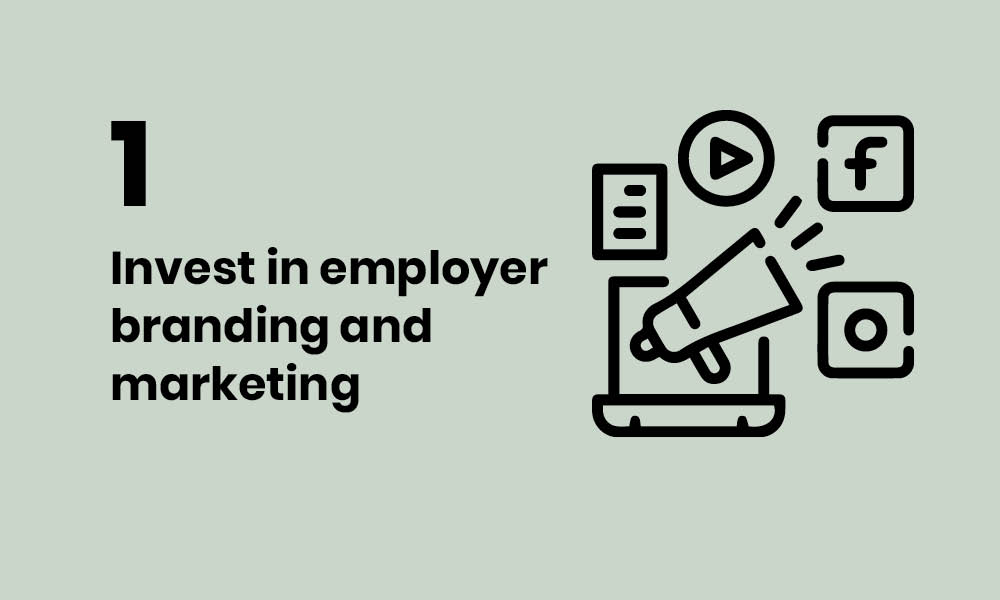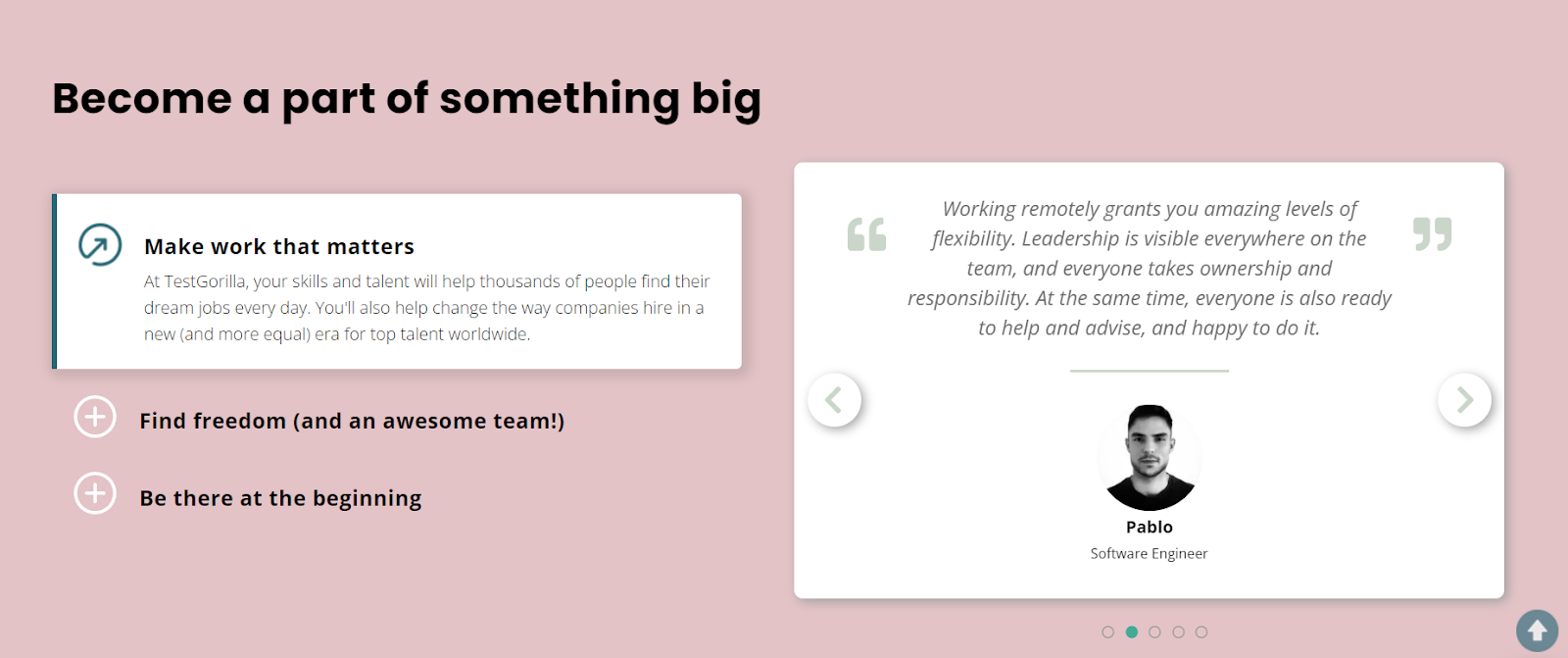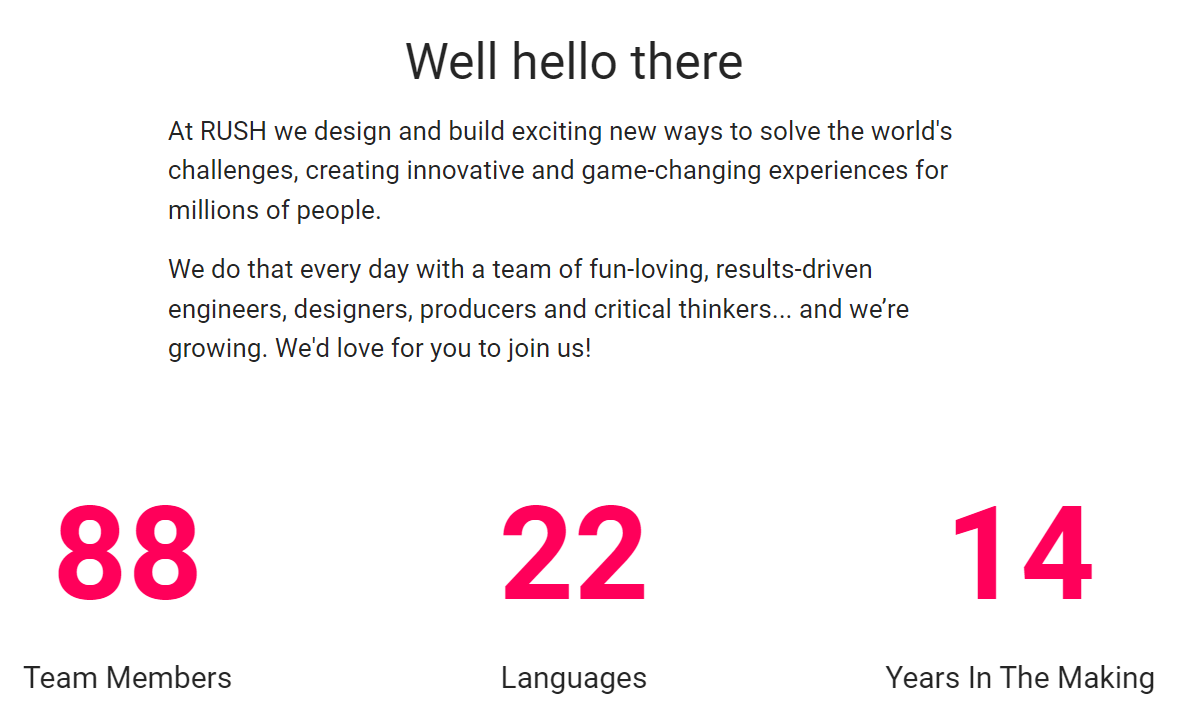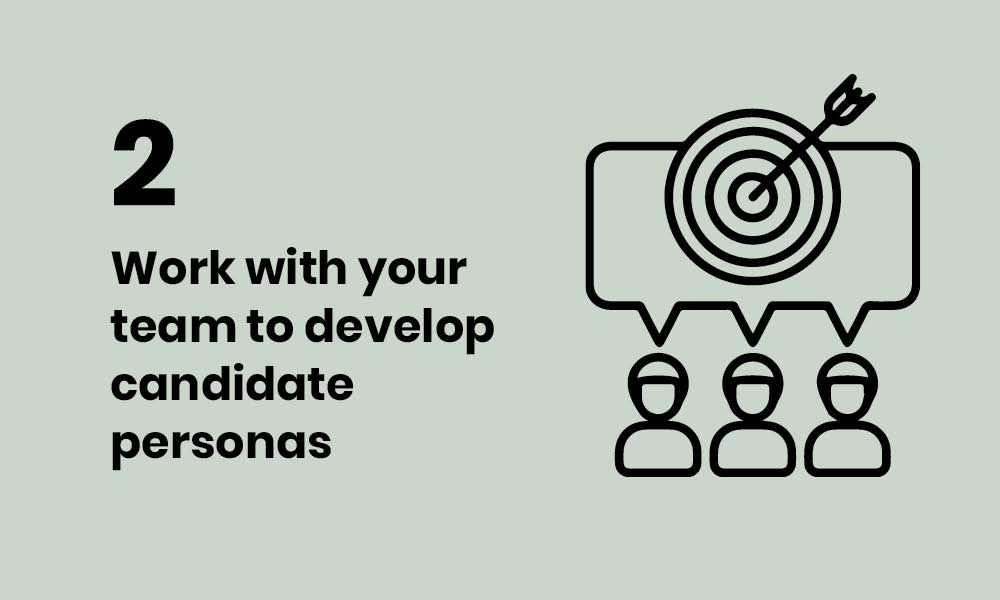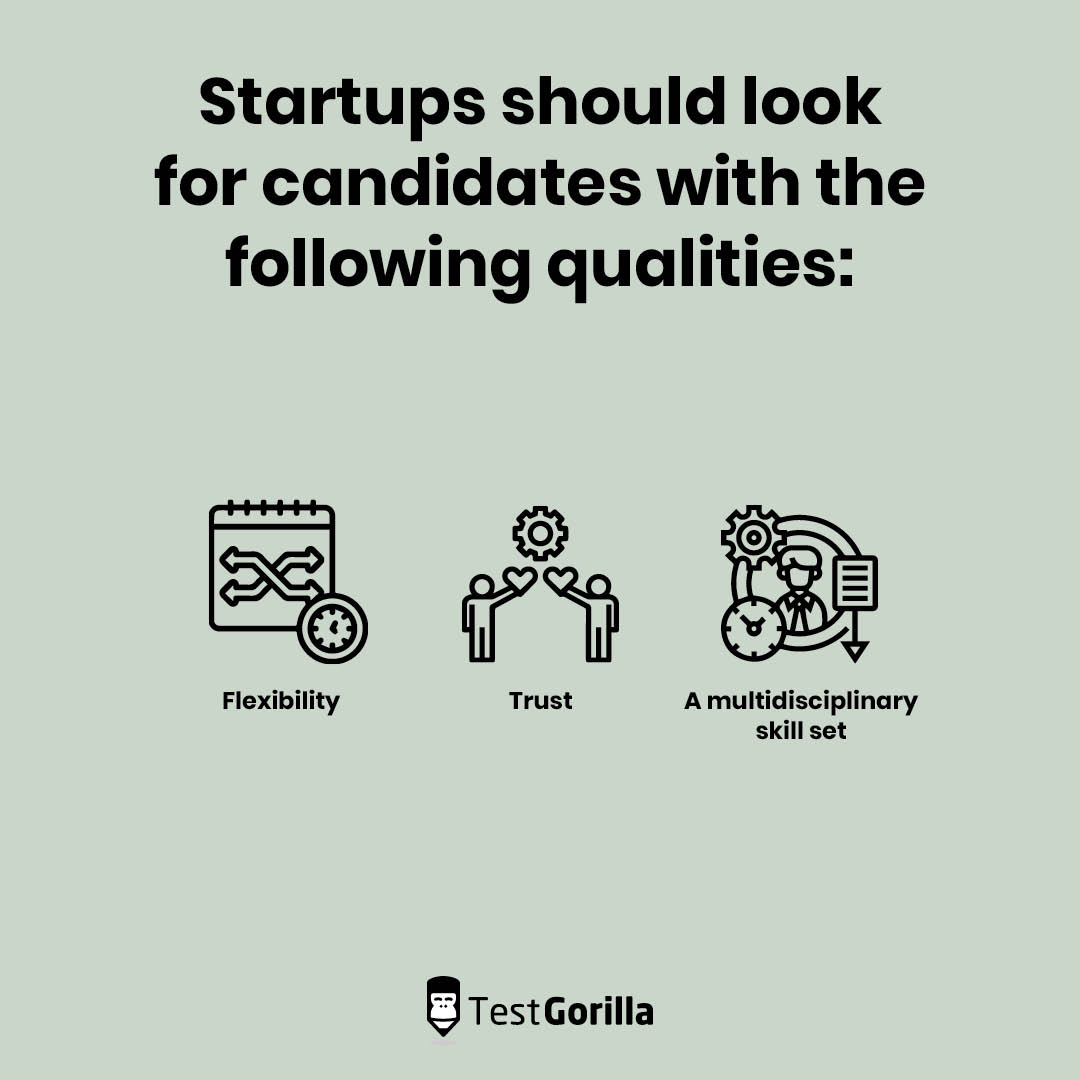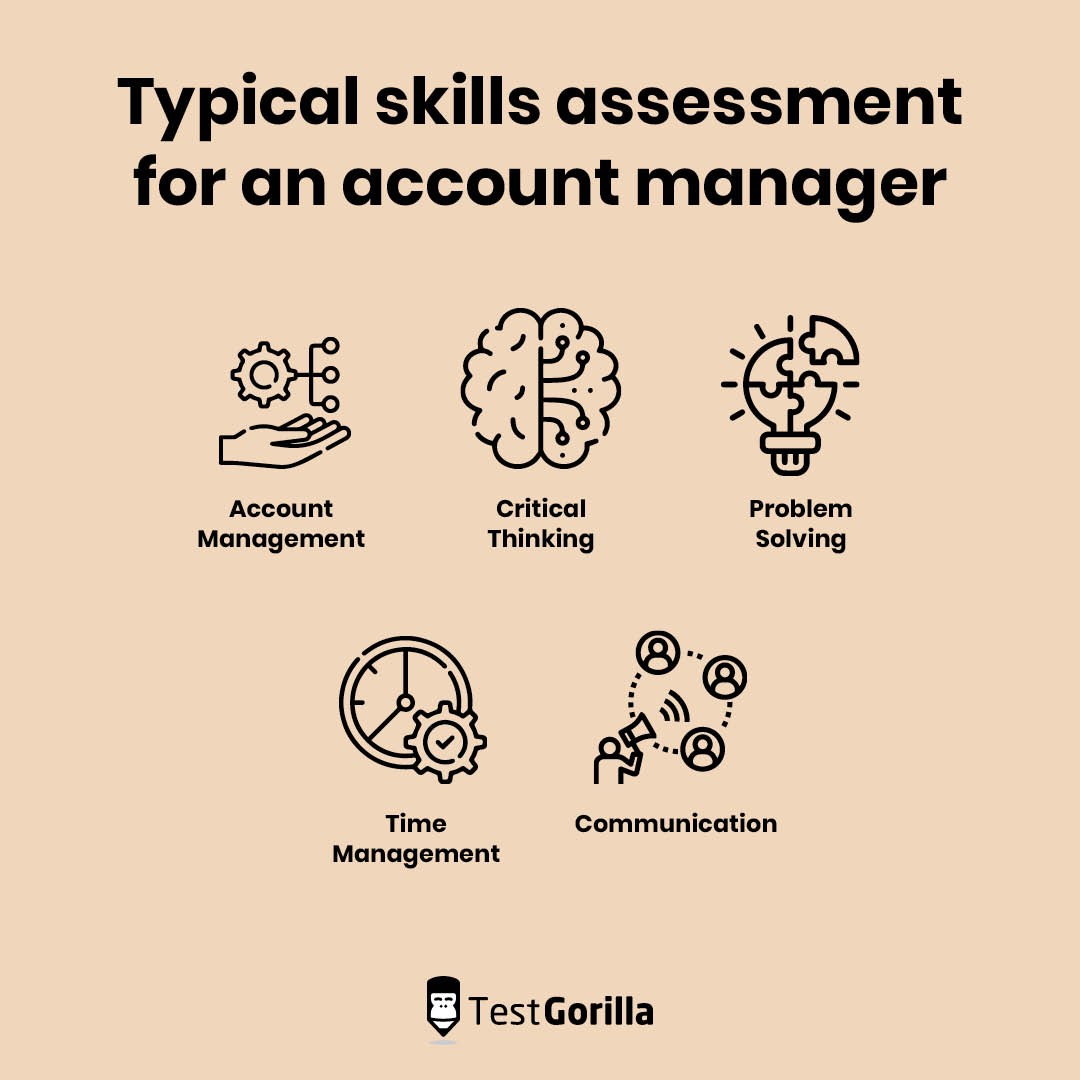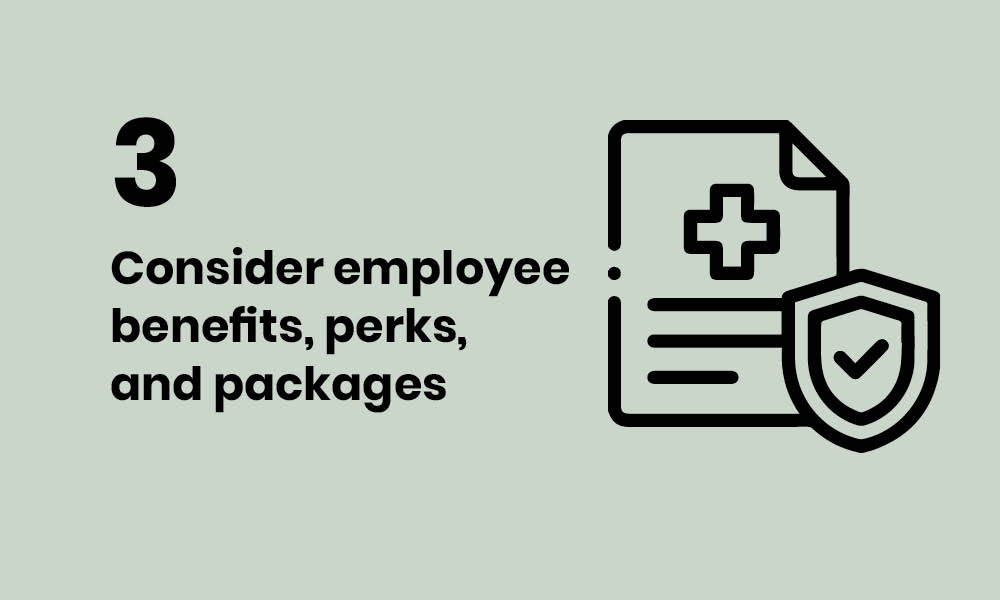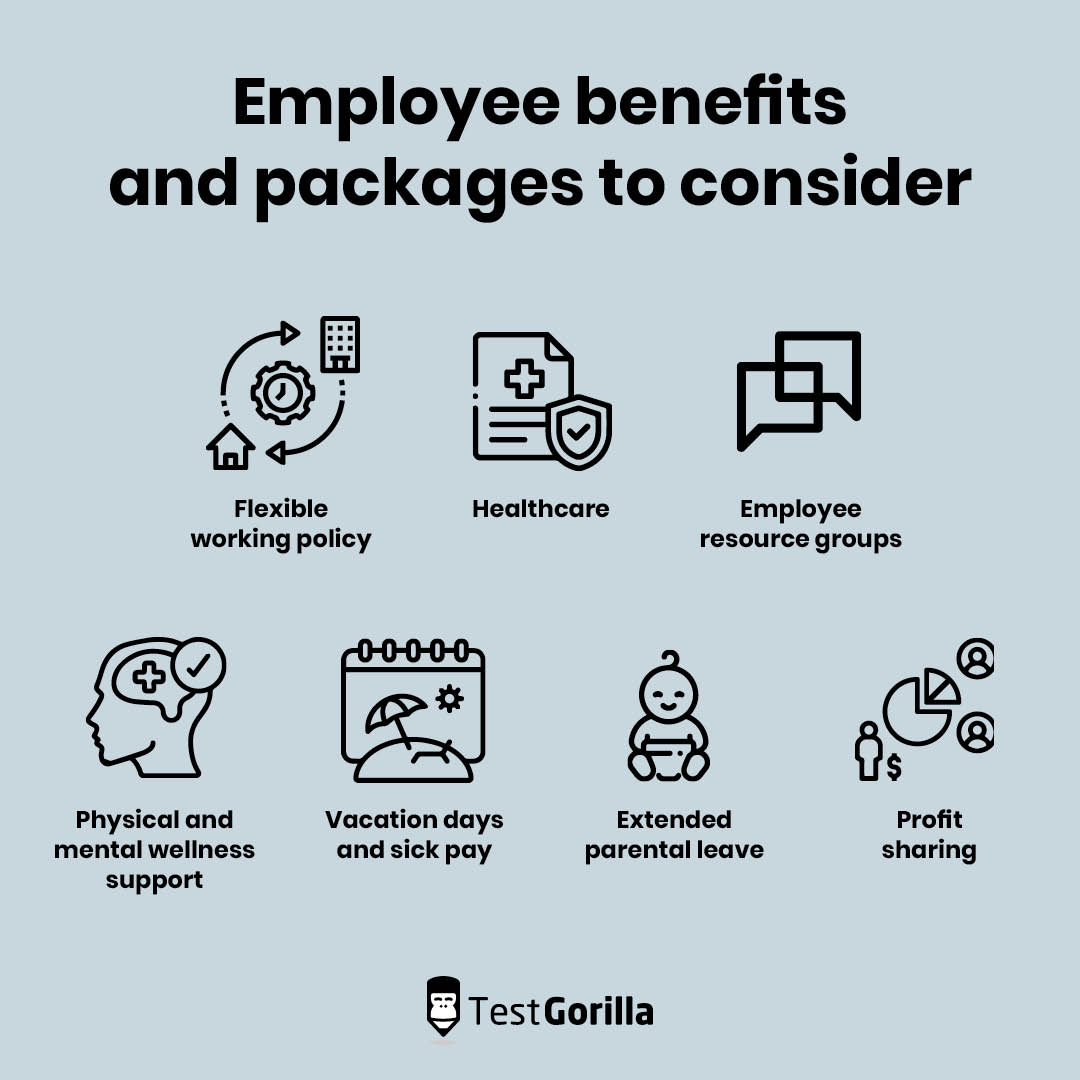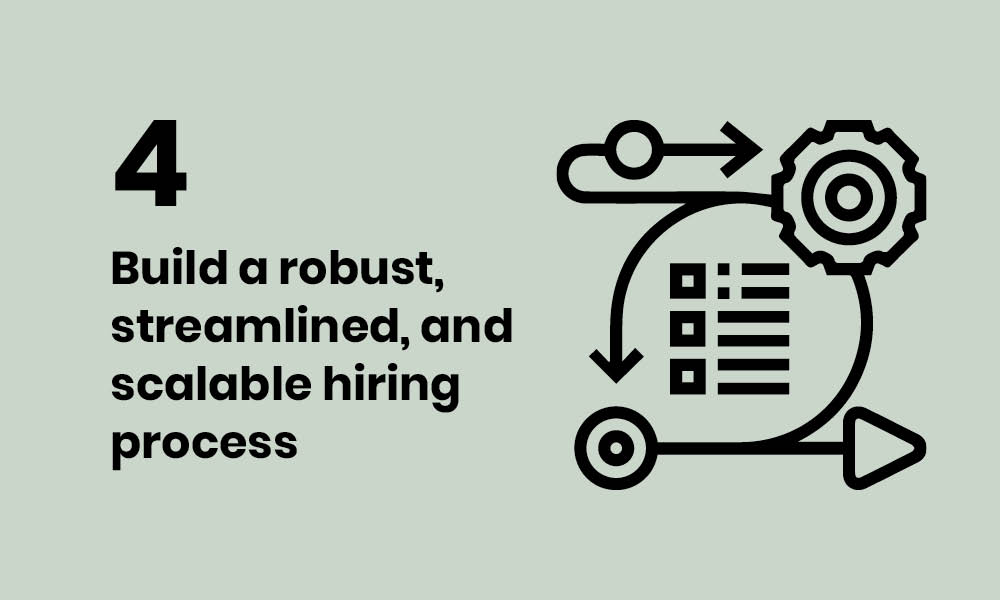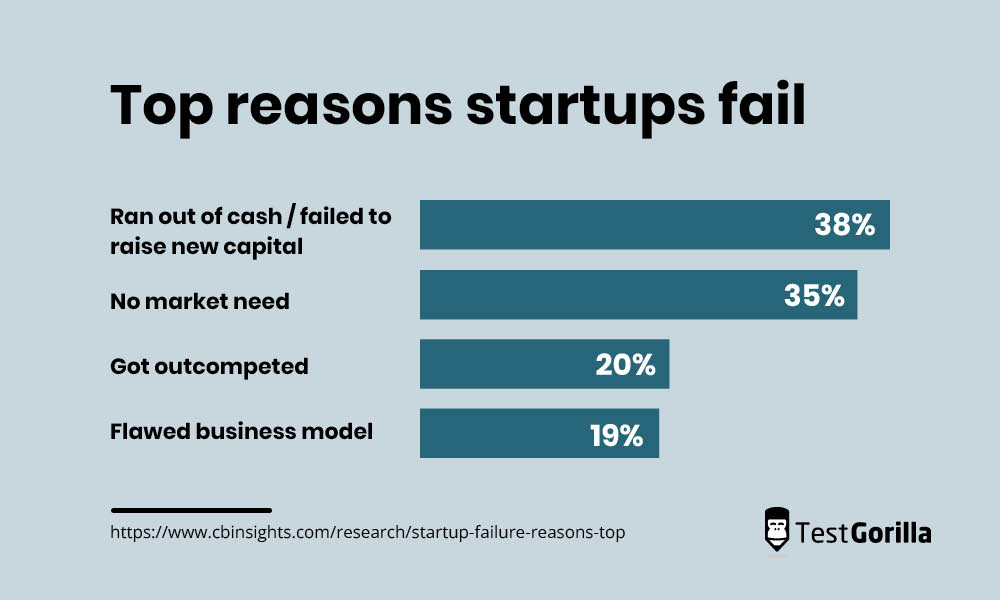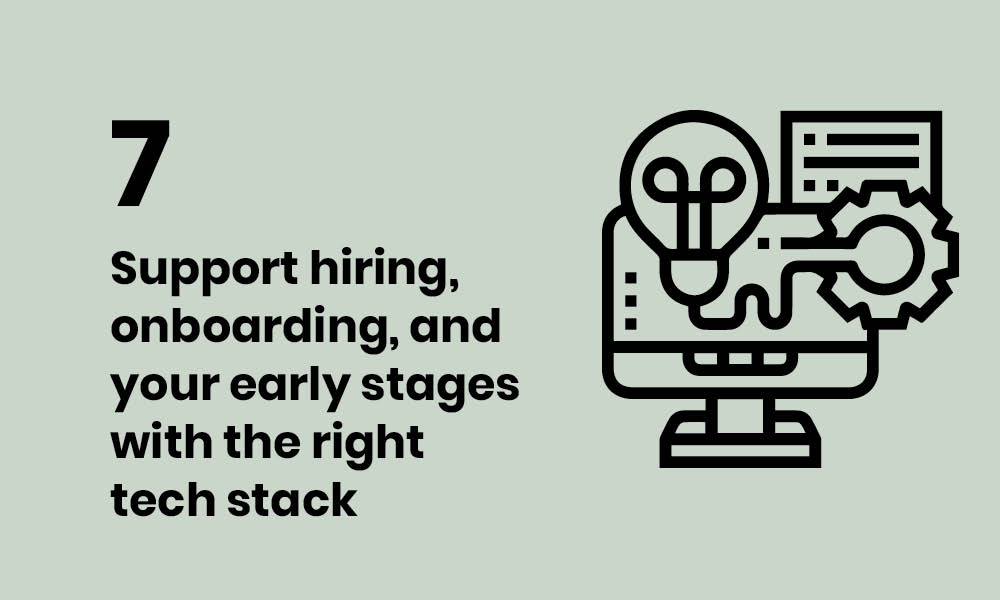Getting a startup off the ground is a literal adventure – it’s both challenging and exciting because it’s uncharted territory.
At this point, you’re still defining your strategy, job descriptions, responsibilities, and hiring process.
On top of that, the market for talent is fiercely competitive right now. Your startup needs solid recruitment strategies to stand out and attract the top candidates.
But startup hiring is also an exciting and meaningful process. It’s an opportunity to nurture new relationships and build the dream team that’ll take your business to the next level.
In this guide, we’ll discuss the seven best practices to facilitate recruitment for startups, from displaying a solid company culture to creating a robust, skills-based hiring process.
Table of contents
- 1. Invest in employer branding and marketing
- 2. Work with your team to develop candidate personas
- 3. Consider employee benefits, perks, and packages
- 4. Build a robust, streamlined, and scalable hiring process
- 5. Source creatively and write job ads that shine
- 6. Train and support your hiring managers
- 7. Support hiring, onboarding, and your early stages with the right tech stack
- Build your dream team with TestGorilla
1. Invest in employer branding and marketing
See your future employees as customers. Like your unique selling point, the right recruitment message helps future candidates recognize your company and consider it a top employer.
Recruitment for startups can be tricky because you aren’t yet well known in the industry, so it’s crucial to ensure you show up on the radar of potential hires.
This means you need to optimize and polish your brand. Your website is the best place to begin.
Here are a few ways to start:
Invest in your about page
Interview team members for a testimonials page or section
Display your company values
Create a careers page to showcase available positions
TestGorilla’s career page shows an example of these four points in action.
This enables potential candidates to easily read about your mission, company culture, and hiring practices.
An impressive careers page introduces candidates to your current team, displaying quotes they’ve said and photos that put a friendly face on your brand.
Go that extra mile to add a little information about each team member’s interests and what they do in the organization. Often, personal information engages a candidate much more than rattling on about professional experience.
This act humanizes your careers page and helps you build a rapport with potential candidates, even if you haven’t met yet. For instance, you might later introduce yourself to the candidate during an interview. In response, they may exclaim, “Oh, right! You’re the violinist!”
Rush Digital’s career page is another great example:
We love that they mention how many languages are spoken on their team. It’s a small but powerful way to show candidates your outstanding multinational workplace diversity.
Wear your beliefs and practices on your sleeve, dare to be different, and show exactly what you’re about. One of the best tools in a startup’s hiring strategy is transparency.
Buffer, a marketing software business, put itself on the map with its Open Salaries initiative. It was a bold move that drew significant attention to a relatively small tech company.
This practice isn’t just a smart move toward total salary transparency – which is a huge topic right now. It also shows your organization’s forward-thinking, accountable culture.
You may just discover that company culture is your secret weapon to securing the best talent available.
A positive company culture is already one of the top job satisfaction factors, outranking both salary and work-life balance in every industry, but it’s especially important when recruiting for startups.
The salary is often the primary motivator for candidates to apply for a role. However, a startup can entice candidates by offering something unique: a specific goal – an innovative, creative mission.
Top candidates have a myriad of options right now, especially in the tech industry. You have to stand out as the organization that talent wants to work for. With so many mission-driven candidates out there, this is an effective tactic.
2. Work with your team to develop candidate personas
Sourcing the right candidates is one of the biggest startup hiring challenges.
In a startup, you don’t have a long, established process and historical data such as: “Well, the best worker in that role had X experience with Y skills.”
This means you have to map the path as you walk.
The best way to tackle this issue is to create personalized candidate personas.
Consider what hard and soft skills are relevant to your startup and the role in question, hiring for potential and growth, and hiring for culture add over culture fit.
You can also include the employee’s geographical location and how you intend to search for them (e.g., online job boards, campus recruitment).
Candidate personas are particularly helpful when hiring for leadership positions or heads of departments.
Eric Migicovsky, the founder of Pebble Watch, believes that startups should look for candidates with the following qualities:
Flexibility
Trust
A multidisciplinary skill set
Let’s look into these more deeply:
Quality | When it’s most useful | Why it’s useful |
Flexibility | Early stages | Startups might have no set direction or roadmap, and being open to new ideas is crucial |
Trust | All stages | Hiring friends, colleagues, and personal connections forms a foundation you can trust |
Multidisciplinary skill set | Early stages | Startups need a wide variety of skills and may require an employee to do a little bit of everything |
Employees with a wide range of skills are essential for new companies. For example, a startup may require a content marketing director to also lend a hand by speaking with clients, answering questions from the team, and reviewing and editing content.
Recruitment for startups generally involves searching for talent with a broad skill set as opposed to a candidate who rigidly sticks to one role or technical skill. Migicovsky says the best candidates he hired had a large set of skills with one skill in a technical domain.
Keep this in mind when building your candidate persona. This strategy enables you to source candidates for a specific hard skill and a variety of flexible soft skills in your pre-employment skills testing.
Let’s say you’re hiring an account manager. Your skills assessment might consist of the following tests:
Account Management test: to assess the one technical skill
Critical Thinking test: to evaluate a soft skill that helps with analyzing and troubleshooting
Problem Solving test: to test a soft skill that helps with scheduling, planning, and handling variables
Time Management test: to examine a soft skill that enables an employee to prioritize, organize, and execute tasks efficiently
Communication test: to screen for a soft skill needed in nearly every role for clarifying statements, conveying information, and active listening
These tests help you hire a flexible, multitalented candidate who suits your specific candidate persona to a T.
Your candidate persona may be a “sales representative who has the skills needed to assist the marketing team once a week.”
This may be ideal – many startup founders believe that hiring experts with deep technical skills right off the bat isn’t a great plan. In the early stages, your organization is still highly likely to change, so having a heavily focused skill set may constrain your development.
We believe that the best long-term strategy is to hire a candidate who fulfills 75% to 80% of your requirements and upskill them down the road once the business starts to take a concrete direction.
3. Consider employee benefits, perks, and packages
Employee benefits and perks are key factors candidates consider when choosing a role. They may seek healthcare, flexible work hours, or a solid wellness program.
Do market research on what candidates expect for similar positions in your industry. Look into what perks are actually beneficial by reading up on what these candidates want and need. Some perks are not desired and might just be trendy buzzwords.
Some benefits to consider include the following:
Flexible working policy: Flexible, remote, and hybrid working all provide a better work-life balance and more autonomy for workers
Healthcare: This may include health insurance, vision insurance, or dental insurance
Employee resource groups: Employee-run groups help underrepresented demographics support and speak with each other
Physical and mental wellness support: This may include wellness programs, therapy, gym memberships, and food deliveries
Vacation days and sick pay: These are classic perks but always beneficial to promote in your job postings
Extended parental leave: A clear departure plan, communication, and onboarding processes are essential for working parents
Profit sharing: You may offer employees a share of the company’s profits
Many startups offer a stake in the organization’s profits, also called equity or profit sharing. This gives employees a sense of ownership, which can make them feel like a part of the company and align their motivations with those of the business.
When you get an idea of what benefits you’d like to offer, do some research on which of them fit within your budget but are still meaningful for new hires.
Even if you can’t afford the greatest benefits, they are still an important part of a solid hiring strategy for startups.
Large corporations may be able to provide bigger, better benefits. Still, the ones you’re able to offer add to the allure you’ve already created by displaying your company culture, values, and unique goals.
4. Build a robust, streamlined, and scalable hiring process
Creating a solid hiring process attracts the right candidates, saves time and money, and ensures repeat success.
A thoroughly planned and documented process is essential in a hiring strategy for startups. Building a streamlined hiring process helps you to:
Minimize bottlenecks
Eliminate bias wherever possible
Evolve a process and strategy that can grow with your organization
Adjust and learn from mistakes as you go
You can simplify and facilitate recruitment for your startup in the early stages if you start optimizing as soon as possible.
So what are a few ways to begin polishing the hiring process?
Here are our top suggestions:
Strategy | Description |
1. Engage with candidates via email | Recruiting emails are a great way to communicate with candidates, display your culture, and source the right talent |
2. Implement hiring tools and technology | Hiring tools like pre-employment skills testing and talent acquisition analytics enable you to fill roles efficiently |
3. Conduct structured interviews | Structured interviews reduce bias and create a repeatable process |
4. Hire for culture add | Grow and evolve your company culture from the start to build a strong foundation |
Let’s start with point one – recruiting emails.
Recruitment email marketing is an excellent top-of-funnel initiative to attract the best talent. It helps engage and educate candidates and is a low-cost, high-return recruitment strategy for startups.
These benefits are essential, considering that 38% of startups fail due to a lack of money alone.
Email marketing is a channel that enables you to nurture top candidates, display your company culture, and inform applicants about your hiring processes.
This includes telling them what hiring tools you use – which brings us to our next point.
Leveraging hiring tech such as skills testing helps you recruit candidates who match your candidate persona and have every skill your business needs. It lets you focus on capabilities over resumes and reduces bias, cost-per-hire, and time-to-hire.
Generally, you should use skills testing after you accept a candidate’s application. However, you can also implement it to upskill and reskill candidates who check most (but not all) the boxes.
Next, you move to the interview stage.
Between unstructured and structured interviews, we recommend structured ones. In structured interviews, you ask all candidates the same or similar questions.
In contrast, unstructured views enable you to improvise, opening the door for an impromptu conversation about mutual interests or getting lost on a tangent.
Structured interviews give all candidates an equal chance to demonstrate their expertise, leave little room for bias, and provide you with a reliable, repeatable assessment method.
“But giving interviewers the opportunity to let loose during an interview helps you hire for culture fit – doesn’t it?”
This is an excellent segue into our next point. Company culture is vital for building a strong, solid team, but we believe culture add, not culture fit, is the way of the future.
Culture add is the practice of weaving a suitable candidate into your culture who also brings new perspectives and skills to your organization rather than strictly looking for someone you share things in common with.
A candidate with values and beliefs that align with your business could be a great culture add.
You can hire for culture add by following this three-step process:
Measure the values of each current team member to get an accurate idea of your organization’s overall values.
Assess new candidates’ values using the same tool you used for your team.
Compare candidates’ values with your team’s to see how they align. Use algorithms at this stage to minimize bias.
Values and beliefs are crucial because they’re two factors that simply cannot be trained or upskilled into a candidate.
Looking for things you can’t train is important for every business but especially when recruiting for startups.
You can train someone to use Microsoft PowerPoint, but it isn’t easy to train them to develop innate soft skills. One study showed that attitudes and soft skills account for 89% of hiring failures, and only 11% result from a lack of technical skills.
So what happens when you combine hiring tools, structured interviews, culture add, and skills-based hiring? You get a success story like that of Sheena Muirden, the content marketing coordinator at TestGorilla.
Sheena scored the highest out of the several hundred people who applied for her role, but her CV didn’t necessarily reflect her specialized marketing skills.
She had been in many roles, from bartending to waitressing to working at an international airline. However, she had no previous roles that suggested she had content marketing expertise in a traditional sense.
Sheena also had a few resume gaps due to travel and motherhood.
A traditional resume-based hiring process would have resulted in her application being rejected, but a skills-based method enabled her to display her talent and experience – and she got the job.
Sheena’s role and responsibilities rapidly expanded as she revamped TestGorilla’s content production, improving its output and quality.
What’s more, she was TestGorilla’s 18th employee, which shows how effective this process is in early-stage startup hiring.
5. Source creatively and write job ads that shine
If you want to find the right candidates, you have to know where to source them and use the language they want to hear.
Often, recruitment for startups involves creative strategies, like pitching to known industry leaders, using employee referrals, and connecting through LinkedIn or other social media platforms.
But you shouldn’t ignore the more traditional methods since you can also find stellar candidates through job boards, paid ads, and billboards.
To discover the best methods for your hiring strategy, try asking yourself a few questions:
“Where does the rest of my industry find candidates?”
“Where have we seen the most success?”
“Where have we been flooded with candidates (i.e., received too many applications)?”
“Where does our target audience spend their time? Where are they likely to see our posting?”
“Where did other people who have this role find it?”
A little market research goes a long way, and after a bit of digging, you’ll discover the channels that best suit your business and roles.
What about the job description? How do you write one that attracts top talent?
Write honest, transparent, and inspiring job descriptions. This not only draws in the best talent but also filters out unqualified candidates.
Here are a few best practices for writing job descriptions:
Be clear about responsibilities
Describe your company’s goals and mission
List benefits and perks
Give a transparent salary range
Be honest about foggy details and anything uncertain
The last point means that you should provide as much detail as possible and not be afraid to be honest. Some points might be unclear and require development (especially in early-stage startup hiring), so enable the candidate to self-qualify where needed.
Suppose you need an account manager, but their responsibilities might still be unclear and need to change on the fly. In this case, you should list a few transferable soft skills in the job description and let the candidate decide if they fit the bill for this dynamic position.
See our detailed example of this in a skills assessment earlier in this post.
6. Train and support your hiring managers
Recruitment for startups is much simpler when hiring managers are well prepared and looked after.
You can maintain high-quality recruitment processes as your startup grows by properly supporting your managers. This can include:
Having regular check-ins and one-on-ones
Using hiring outcomes as a part of managers’ KPIs and coaching
Continuing training as managers move up the ladder so that they can hone their skills
Conducting interview training on minimizing bias, conducting structured interviews, and avoiding cliché questions
Jenn Tardy, a diversity recruitment trainer, says that hiring managers are often told to be wary of unconscious bias and educated on legal rules but aren’t given enough context, specifics, and nuanced information.
She recommends showing hiring managers examples of unconscious bias sneaking into an interview or talking about issues that aren’t necessarily illegal but still unethical or inequitable.
Tardy also recommends coaching hiring managers on:
Accountability: Let hiring managers know they’re accountable for the candidates they hire. It isn’t all the recruiter’s job.
Sourcing and attracting talent: It’s a recruiter’s job to source, but a hiring manager can help by attracting candidates via powerful thought leadership.
Building an inclusive environment: It’s easier to retain the talent you find if your environment is welcoming and inclusive.
Providing meaningful feedback: Hiring managers should provide candidates with feedback on why they weren’t chosen. This is valuable information the candidate can use constructively and makes them more likely to remember you positively.
Startup recruiting can’t happen without a hiring manager, so it’s critical that you don’t just toss them into an interview and let them wing it.
Hiring is a skill like any other, which means you can provide coaching and feedback for it and continuously improve it. And as your hiring managers get better, so will your hires.
The ideal candidate could be waiting in a sea of applications, and unless your hiring manager has the expertise to recognize them, you won’t add them to the team.
7. Support hiring, onboarding, and your early stages with the right tech stack
Recruitment for startups requires the right technology and software, especially in the early stages.
At this point, everything is new and uncertain, and having a reliable tech stack is a lifesaver.
Leveraging tools wherever possible ensures all candidates have a consistent experience and all current employees receive the same training.
Here are a few great additions to your tech stack:
Learning management systems: A course management and delivery tool enables all workers to receive the same training and provides them with access to all necessary resources
Project management tools: With these tools, deadlines, employees, and tasks are simpler to organize and held within a central system
Communication tools: Software like Slack, Microsoft Teams, and Google Chat enable quick, efficient communication (especially with freelancers, contractors, and remote teams)
Skills-testing software: In addition to improving the candidate experience, skills testing helps you upskill and reskill your employees as roles evolve and responsibilities become clearer
In the early stages of a startup, not much is defined – processes are still developing, some roles have mixed responsibilities, and you decide your direction as you go. Because of this, having a solid tech stack helps you and your team stay organized and on track.
The right tools also make rapid growth easy. For example, a learning management system with courses for onboarding and training can ship out the appropriate lessons to dozens of new hires just as easily as two hires.
Build your dream team with TestGorilla
Recruitment for startups can be intimidating – it’s unfamiliar and a little daunting. But when you implement the right strategy, you can hire the most qualified candidates and get started on the right foot.
Try tactics like improving your employer branding by displaying your company culture, using creative channels to source your talent, and assessing candidates with pre-employment skills testing to assemble a capable, diverse team.
These proven hiring strategies help you mitigate risk so that you can focus on how exciting a new business can be.
Combine new people, new goals, and new opportunities to build an all-star team to back you up.
For more tips and an in-depth guide on hiring candidates based on their skills, read our article on skills-based hiring practices.
To start evaluating your company culture and assessing candidates for culture add, try using TestGorilla’s Culture Add test.
Related posts
Hire the best candidates with TestGorilla
Create pre-employment assessments in minutes to screen candidates, save time, and hire the best talent.
Latest posts
The best advice in pre-employment testing, in your inbox.
No spam. Unsubscribe at any time.

Hire the best. No bias. No stress.
Our screening tests identify the best candidates and make your hiring decisions faster, easier, and bias-free.
Free resources
This checklist covers key features you should look for when choosing a skills testing platform
This resource will help you develop an onboarding checklist for new hires.
How to assess your candidates' attention to detail.
Learn how to get human resources certified through HRCI or SHRM.
Learn how you can improve the level of talent at your company.
Learn how CapitalT reduced hiring bias with online skills assessments.
Learn how to make the resume process more efficient and more effective.
Improve your hiring strategy with these 7 critical recruitment metrics.
Learn how Sukhi decreased time spent reviewing resumes by 83%!
Hire more efficiently with these hacks that 99% of recruiters aren't using.
Make a business case for diversity and inclusion initiatives with this data.

